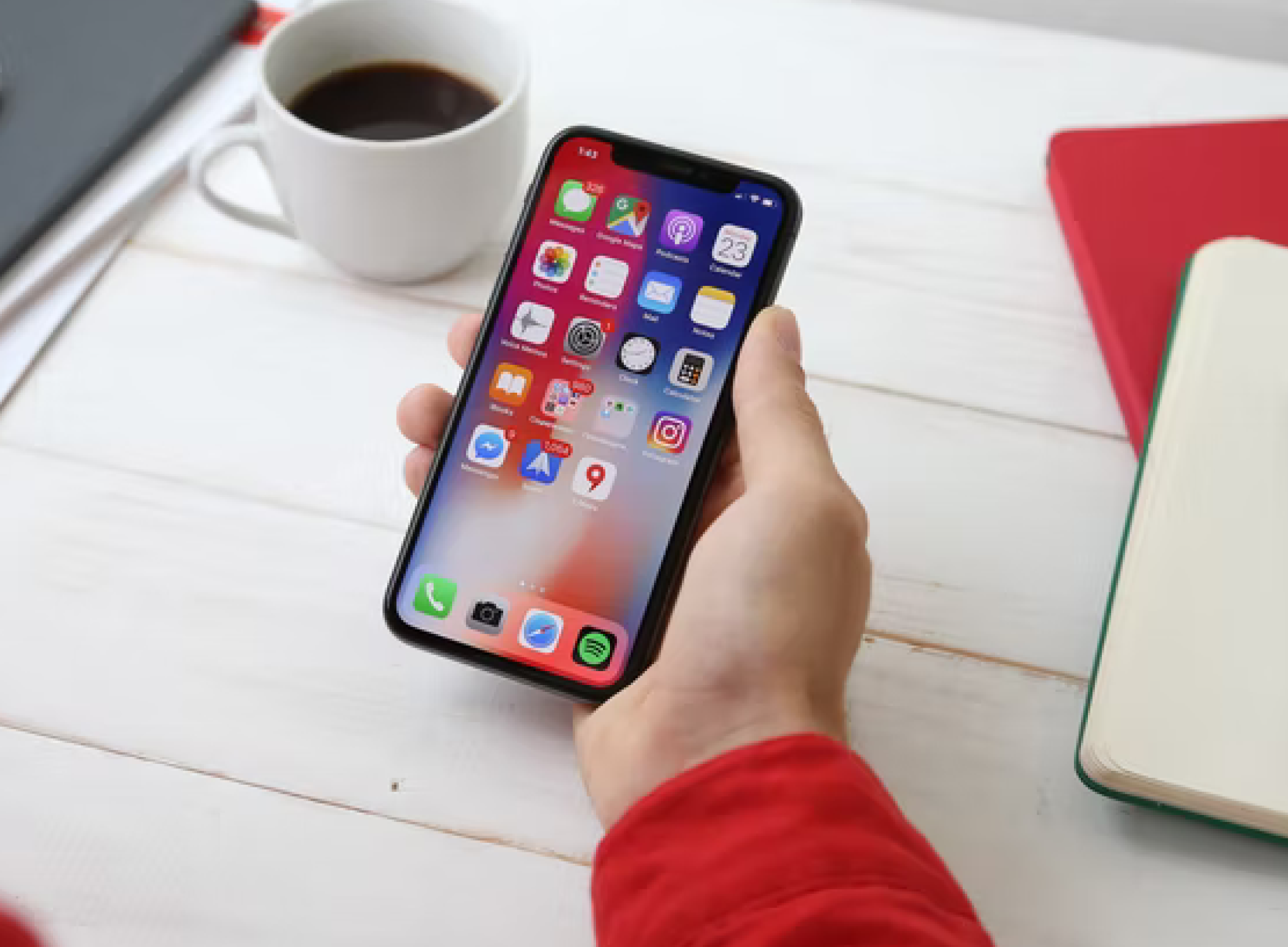Even though there are over five million mobile applications available, the demand for new ones continues to develop because of rapid technological advancements and people’s desire for more innovative ways. Our culture, without a question, is becoming increasingly reliant on mobile devices and, as a result, mobile apps. Technological breakthroughs enable the development of new solutions as well as the enhancement of existing ones.
In fact, apps account for about 90% of all time spent on mobile devices nowadays, owing to the pandemic and all the time spent at home.
This isn’t a new trend though; smartphone apps have been popular for some years. However, technology advances at a breakneck pace every year, resulting in the emergence of new and more difficult mobile trends.
Keeping up with the newest mobile app development trends can thus assist you in developing a successful app, attracting users, and encouraging them to use it on a regular basis. You’ll be able to create innovative solutions based on your users’ difficulties and better meet their needs.
In this article, we’ll give you a rundown of the most popular mobile app development trends for 2022, so you can get started on the right foot.
Top 10 Mobile App Development Trends of 2022
5G
5G is a new generation of telecommunications network innovation that offers sophisticated applications in Augmented Reality (AR) and Virtual Reality (VR), 4K and 360 video streaming, and networked IoT devices.
Not to mention, 5G will be 100 times faster than 4G in comparison. As a result, the growth of 5G will improve the functionality of mobile apps, leading to new mobile app development trends. Developers, resellers, and creators expect to see a significant shift in the way mobile apps are used.
To summarize, 5G offers enhanced speed and capacity, lower latency, and improved connectivity than previous technologies, providing fewer interruptions and smooth communication.
Augmented and Virtual Reality Integration
Since 2020, when COVID-19 began influencing a wide spectrum of businesses, social distancing technologies have exploded. Mobile apps have grown in popularity and are now being used in the business world too.
Businesses may use AR and VR to present their services and products in the best possible way. Furthermore, clients may see how a particular product, such as apparel, will look on them before purchasing it. As a result, both merchants and purchasers benefit from incorporating VR and AR in their mobile app development.
In addition to the commercial benefits, AR and VR can improve learning experiences and make mobile apps more appealing and engaging.
Blockchain
Blockchain technology is one of the most recent 2022 mobile app development trends. Security and data misuse has always been a major issue among app users. Fortunately, blockchain offers a solution to these issues.
This technology enables the creation of decentralized databases, which is why it is becoming more popular. Simply said, there is no need for a single gatekeeper service provider or organization in a decentralized database. Apps that use this technology are safer since no single individual can change user databases and gain access to sensitive data.
Artificial Intelligence (AI) and Machine Learning (ML)
Mobile phones have been using AI and ML for facial recognition for quite some time now. However, app development companies are increasingly utilizing these capabilities to enhance user security, functionality, and overall experience. Indeed, mobile app security has been redefined because of this growth. PayPal, Google Pay, and Apple Pay are examples of online payment solutions that identify and protect consumers using facial recognition and biometrics.
Using Machine Learning (ML), you can drastically reduce the time it takes to design an app. AI and ML, on the other hand, can eliminate errors that human programmers would have overlooked if they had employed them. AI elements, such as chatbots, are now being included in a variety of existing apps, as well as personalizing certain aspects of the user experience.
AI and ML will be heavily employed to deliver geolocation, a better gaming experience, and sophisticated software development to customers as a mobile app development trend in 2022.
Beacon Technology
Healthcare, eCommerce, museums, and hotels are all using beacon technology. It has only recently gained popularity, even though it was first released in 2013. Using this technology, the online and actual worlds can be linked in a unique way.
Beacons, for example, can help you better understand your customers’ behaviour by analysing how they interact with your mobile apps in your physical stores. Beacons for mobile payments, AI-enabled chips, and AI and ML tools will be among the beacon technology trends.
Low-energy Bluetooth technology is used by beacons to relay signals to other smart devices. A retail beacon, for example, connects to a customer’s phone via Bluetooth and offers specials and promotions. The customer will be provided with a wealth of information about products and sales in the area.
Furthermore, you can use beacons to track a customer’s behaviour and see if they spend a lot of time on a particular category or service. The primary benefit of beacon technology is proximity.
Mobile Commerce (M-commerce)
E-commerce and M-commerce are frequently confused. E-commerce refers to the selling or purchase of goods and services over the internet. M-commerce, or mobile commerce, on the other hand, is merely an extension of E-commerce. Simply said, the transaction now takes place online, but specifically through a mobile device.
M-commerce has been a quickly growing trend for the past three years, and it will continue to be so in 2022. Even though COVID supported mobile commerce, a rising number of users have adopted it, demonstrating that the trend of shopping on mobile devices will continue.
If you still aren’t convinced, M-commerce is expected to reach $22 billion by 2022, demonstrating a stable rate of development. And, as this trend continues to gain traction, mobile app developers are under increased pressure to create better-performing apps, including native M-commerce apps.
Mobile wallets
Another emerging trend in M-commerce is digital wallets. Digital wallets are becoming more popular among modern consumers as a safe and easy way to make purchases. Examples include MobilePay, PayPal, ApplePay, and GooglePay, to name but a few.
Most banks now have their own mobile wallet where you can do a variety of financial operations, such as bill payments, online transfers, and online shopping. In supermarkets and physical shops, you can even use your digital wallet to replace your card. Contactless payments using mobile wallets increased during COVID, and this trend is projected to continue as the number of such wallets develops.
App Development for Multiple Platforms
Cross-platform programming allows you to design apps that operate on many operating platforms without drastically altering the codebase. Simply put, you can create apps for iOS, Android, Windows, and the web using a single codebase and a few tweaks to match the native feel of each platform.
This trend is not only gaining traction, but it is also blurring the distinctions between smartphone and PC software. Apple, for example, has already released a processor that allows both iOS and macOS apps to operate at the same time.
You may reach an even broader audience with cross-platform apps, and such multi-tasking allows consumers to choose which device they want to use to access the app. Additionally, because you won’t have to design apps for each platform independently, you’ll be able to develop apps with a wider market reach and at a reduced cost.
Wearables
In 2022, wearable mobile application development will also be on the rise. Wearables are popular among users because they are simple to use, transport, and provide personalized data. Wearable devices like smart jewellery, watches, and display devices like Apple Glass, for example, are becoming increasingly popular.
Health-related applications appear to be becoming increasingly popular as part of this trend. Fitbits and smart watches linked to health applications track our movement, sleep patterns, and overall health, sending us notifications when we stray or need to make healthy changes. IoT is used in smart bracelets and smart wearables to monitor more in-depth conditions.
As you can see, these devices can be controlled remotely via an internet connection or through mobile apps. And, even though they’ve been available for a decade, their popularity has skyrocketed in recent years as the technology underlying them has improved.
Apps for foldable devices
Mobile phones have gone entirely to touch screens in the recent decade, with either no buttons or only one. However, we’ve been hearing about foldable phones again in recent years, and despite market scepticism, smart foldable phones are increasingly becoming a reality.
In 2019, the Samsung Galaxy Fold, Huawei Mate X, and Motorola Razr made the news. Clearly, they had a significant impact on the user experience. These smartphones enable consumers with larger screens without increasing the overall size of the device by compressing and extending screen sizes according to user preferences.
As a result, when updating or designing mobile apps, you must consider resellers and content creators from a development standpoint. The app interface changes when the user folds or opens the mobile device. With foldable devices, you can also take advantage of this trend to make your apps more immersive and detailed.
Bottom line
The Google Play Store and the Apple App Store together have 6.63 million apps. How would you ensure that your app stands out from the crowd?
The truth is that you won’t be able to until you keep up with the latest mobile app development trends and understand how to use them to create powerful, feature-rich apps. The mobile app business will continue to grow at a quick pace, and the mobile app development industry will change as well. New hardware capabilities, paired with expanding mobile app platform development technologies, rising backend platforms, and microservices, will continue to lead mobile app solutions.
Continuous learning and constant awareness are the only ways to survive the cut-throat competition.
Appello Software is Australia’s leading app and web development company. Contact us to get a consultation and a quote for your next project.



